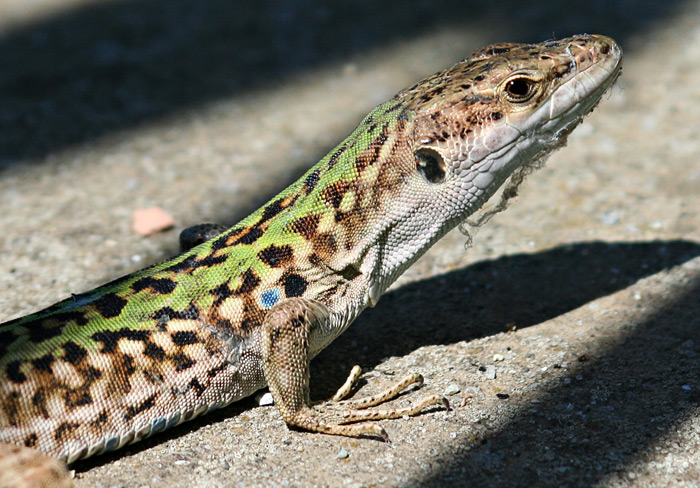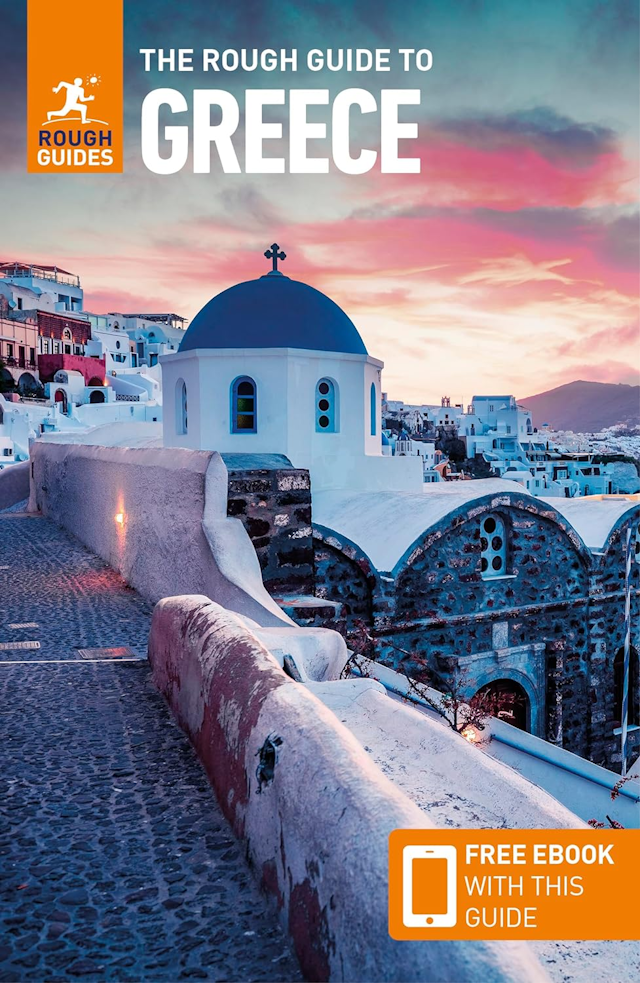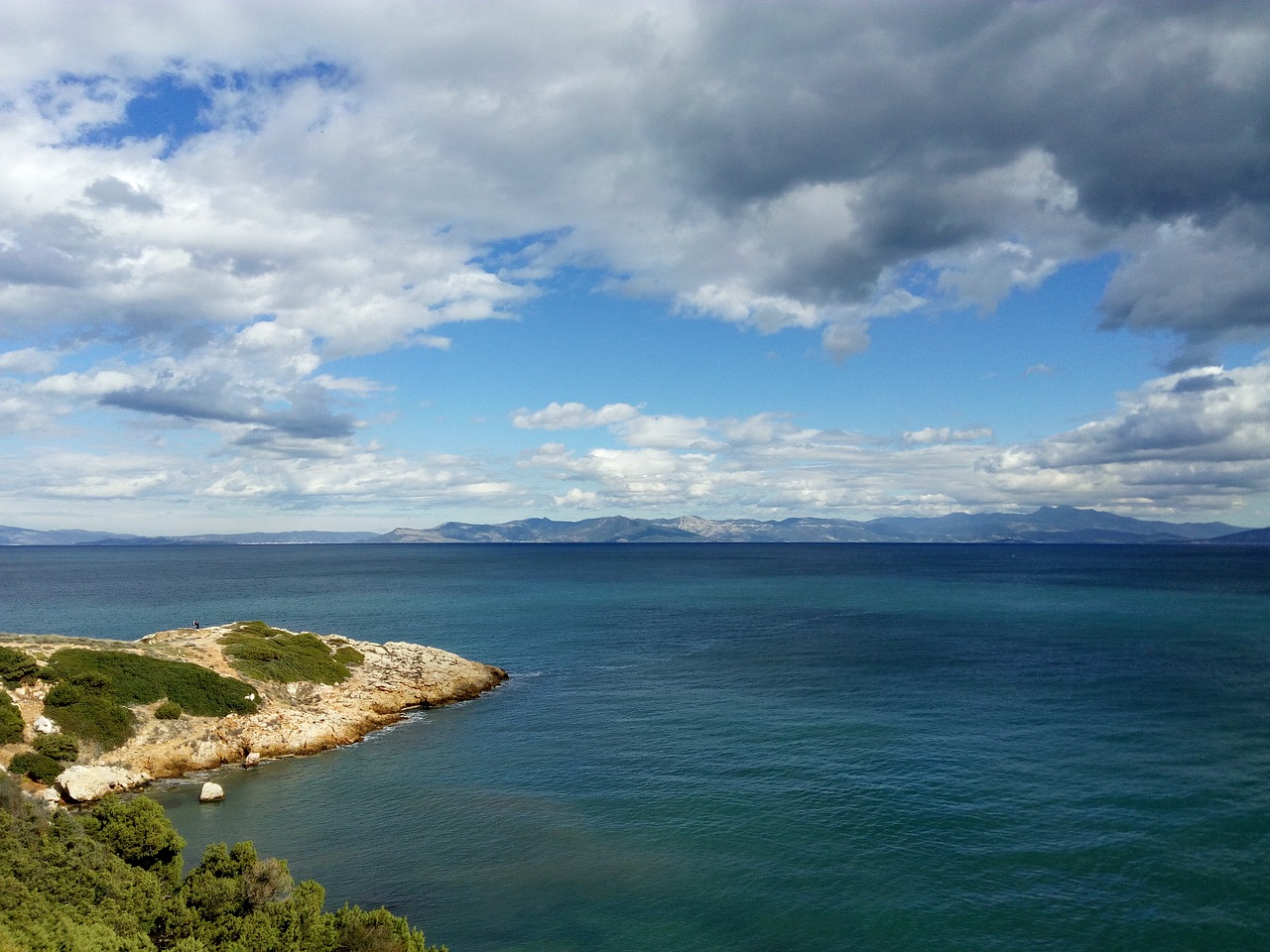Rhamnous
Attica
The classical archaeological site of Ancient Rhamnous or Rhamnus is in a remote part of Attica and best reached from Athens by renting a car.
The classical site of Ancient Rhamnous is one of the most remote and, for this reason, one of the most appealing in Attica. However you get there (see below), you'll be glad you made the journey and you may even have the place to yourself.
You might wonder why the site is even kept open when it has so few visitors, but archaeologists have been working here since 1975 and it is one of the best-preserved sites in Attica. A lot of it is overgrown, which is also part of its charm, as wildlife is abundant here. The setting is also impressive, on a headland above the sea, with views across the Euboean Strait to the island of Evia.
Rhamnous Wildlife
Wandering around the site you are accompanied by butterflies, and by lizards that scuttle away into cracks in the rocks and stones. Nature even gives the place its name, as Rhamnous is named after a prickly shrub that grows in the area, called ramnos in Greek.
The site isn't large and it helps to know the background to Rhamnous in order to appreciate it for more than just its tranquility. Nemesis, the Greek goddess responsible for deciding whether we mere mortals should have good or bad luck, was worshipped here. The Greek gods always eventually got their revenge on anyone who offended them, hence the phrase 'to meet your nemesis'.
Some of the Persian forces who went to fight at the Battle of Marathon are said to have come ashore here, a 3-hour hike from the battlefield. It's said that the Persian defeat is down to the fact that they stole a marble block from the Temple of Nemesis, on which they intended to commemorate their victory. It was not to be. Perhaps Nemesis herself handed out some bad luck to the Persians on that day.
Although much of the site is made up of the foundations of buildings, the Temple of Nemesis can be clearly identified. This dates from about 460-420BC, and was built at the same time that the Parthenon was being built on the Acropolis in Athens. A statue of Nemesis stood inside and was made of marble from Paros.
Nearby is a smaller temple which was built with stone from Paros and dedicated to Themis, the goddess of good counsel, and whose symbol was the scales of justice. This is even older than the Temple of Nemesis, dating from the late 6th century BC.
How to Get to Rhamnous from Athens
You'll need a rental car to get there, or if you're really keen to see Rhamnous you could take a taxi from Athens but it would be expensive as it's an hour's drive each way, plus waiting time. You could negotiate a day's rate with a driver.
If you're on a budget then there are a few buses a day from Athens to the nearest village, Kato Souli, but then it's a 90-minute walk to the site, or a taxi, and you'll have to double-check the bus times.
How to Get to Rhamnous from Athens Airport
If you pick up a rental car at the airport, it's an hour's drive north to get to Rhamnous. The nearest accommodation to Rhamnous is about a 30-minute drive away, but there are some nice, laid-back, small beach resorts along this coast. It would make a good and very Greek first night in the country, to collect your rental car at the airport, drive to Rhamnous and explore, and then kick back for your first night in one of these little beach towns.
Latest Posts
-
The Lesser-Known Traditions of Greek Easter
Step off the beaten path this spring and discover the enchanting — and often surprising — Easter traditions found across Greece. -
Easter in the Mystical Castle of Monemvasia
In the castle town of Monemvasia, with its dramatic medieval backdrop and sea views, Easter is a deeply spiritual and atmospheric experience. -
Sifnos: Greece’s Hidden Culinary Star on the Rise
Sifnos, a Cycladic island, is gaining fame for its rich culinary heritage, especially the beloved melopita honey-cheese tart. -
Easter in Leonidio: A Tapestry of Light, Culture and Cliffs
In Leonidio, Easter comes alive with handmade hot air balloons in the sky and lanterns made from bitter oranges in the streets. -
April 9 Strike in Greece to Impact Public Transport, Ferries and Air Travel
Transportation and travel across Greece will face disruptions on Wednesday, April 9, as public transport, ferry and aviation workers join a nationwide strike called by Greek labor unions. -
Ancient Theater of Lefkada Brought Fully to Light Following Systematic Excavation
The Greek Culture Ministry has announced that the first ancient theater ever identified in the Ionian Islands has recently been brought fully to light on Lefkada, revealing an impressive monument that… -
Seven Greek Traditions Recognized as Intangible Cultural Heritage
From traditional barrel-making to age-old folk dances, seven new entries on Greece’s National Inventory preserve the country’s living heritage for future generations. -
Greek Air Traffic Controllers to Hold 24-hour Strike, Disrupting Flights on April 9
The Hellenic Air Traffic Controllers Union have announced a 24-hour strike for Wednesday, April 9, in response to the protest called by the Civil Servants’ Confederation (ADEDY). The strike is being h… -
Ten Best Budget Hotels on Santorini
Greece Travel Secrets picks the ten best budget hotels on Santorini, some with caldera views, some near beaches and some close to the heart of Fira. -
No Ferries in Greece on April 9 as Seamen Join Nationwide Strike
The Pan-Hellenic Seamen’s Federation (PNO) has announced its participation in the 24-hour strike called by the General Confederation of Greek Labor (GSEE) on Wednesday, April 9. The strike, which will…












